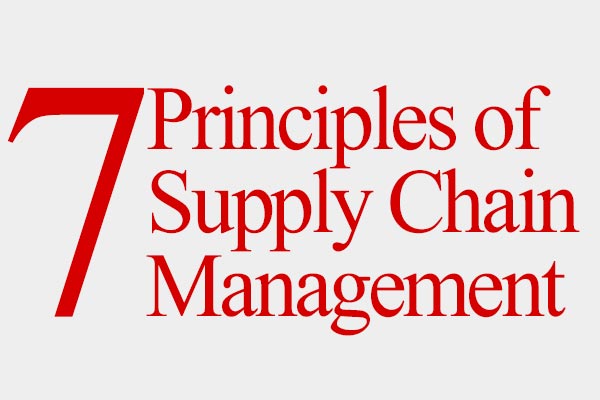5 Reasons Business Transformations are Doomed to Fail

Companies are too often nearsighted when it comes to identifying challenges, business transformation isn’t about managing the gaps - it’s about preventing them.
Business Transformation Challenges
Sparked by a chain reaction of challenges stemming from the pandemic, businesses are accelerating their transformation initiatives.
Some are doing so in an effort to harness new market opportunities.
Some are attempting to stabilize their companies after a very challenging period of uncertainty.
For others, it’s to better align operations with strategic business goals and the evolving economic environment.
As an example, US manufacturing is expected to have 2.1 million unfilled jobs by 2030. Attracting and retaining workers is harder than ever.
In the video (to the right), our panel of experts discussed the challenges and opportunities of the manufacturing industry talent shortage, including the return to work, automation, and the evolving workforce.
Like thousands of transformations that have taken place before, 70% of current initiatives will likely fail.
It’s a stark reality, but a fate that companies can avoid by developing a strategy with these five considerations in mind.
1: Business Transformation Desire vs. Readiness
There’s no time like the present for business transformation - or is there?
Properly assessing business readiness is a huge predictor of a successful transformation.
Pump the breaks if you:
- Don’t have a true north. Businesses need a clear understanding of their direction, opportunities, and goals to chart the best path forward.
- Aren’t open to introspection. To improve, companies must first acknowledge weaknesses and be willing to work to overcome them.
- Can’t execute over time. Any change requires resources to execute. This includes the initial change as well as iteration early on to get it right.
“It really starts at the top. CEOs set the tone for how open other leaders and employees are to change.” - Jennifer D’Angelo, Managing Director, Advanced Resources
2: Real-Time Challenges vs. Strategic Business Needs
Companies are too often nearsighted when it comes to identifying challenges. Business transformation isn’t about managing the gaps - it’s about preventing them. More than 40% of a successful transformation’s value comes from growth initiatives, according to McKinsey research.
How do companies balance real-time needs with strategic business objectives?
- Don't lose sight of the customer experience
- Don't analyze challenges in siloes
- Don't ignore the ripple effect of any change, big or small
- Do tie transformation to growth initiatives
- Do redesign processes to improve visibility
- Do apply lessons learned across your operations
3: Strategic Stakeholders vs. Execution Leadership
In order for a business transformation initiative to be successful, organizations must have support from a strategic perspective as well as on the execution side.
Strategy
- Visionary (CEO, COO, or CTO)
- Executive Stakeholders
Strategy & Execution
- Center of Excellence (CoE) Leaders & Team
- External Resources & Experts
Execution
- Manager-Level Stakeholders
- Internal Champions
- ALL Frontline Employees
All of this to say, real change rarely happens without the support of frontline employees. For any initiative to be successful, companies must have frictionless adoption by all employees.
Keeping the lines of communication open with all frontline employees, especially during the early stages of execution, will help to uncover potential issues or roadblocks early on and proactively adjust for effectiveness.
4: Change Expectation vs. Change Management
The problem with change management strategies is that they were designed for a time when change was the exception, not the norm. While they’ve evolved significantly over the past few decades to accommodate our now digital-first business world, they still aren’t meant for a world of continuous change.
Businesses need to move to a culture where change is no longer the exception, it’s the rule.
How can companies build a culture that embraces change?
Focus on:
- TRUST. According to Gartner, employees with high trust have 2.6 times the capacity to absorb change. Leaders must be transparent, communicative, and willing to hear and respond to feedback to build trust.
- MANAGERS. Employees look to their direct manager for cues when it comes to change. Managers need to be change agents and champions, leading by example and setting the tone for change as a positive constant.
- RESULTS. Companies can’t successfully establish a culture of change without explaining why it matters. Communicating big and small wins far and wide will help rally employees around the purpose and build momentum for future change.
5: Expert-led vs. internally-driven transformation
With success still largely elusive when it comes to business transformation, many companies rely on external partners to help them develop and execute on their strategies. 95% of leaders rely on outside help to shape business transformation strategy, according to a recent Insight Intelligent Technology™ Report.
Benefits of working with external transformation consultants:
- Expertise. Consultants bring a high level of specific expertise to complex initiatives.
- Experience. There are many lessons learned that consultants bring to transformation engagements, preventing companies from making the same mistakes.
- Faster ROI. There is a lot of work that goes into making initiatives successful, including employee time and hard costs. Working with consultants can drive faster results.
“We have helped many businesses throughout their business transformation journeys. From developing a strategic workforce plan to addressing specific supply chain weaknesses, our consultants have played important roles in both strategy and execution of initiatives.” - Jennifer D’Angelo, Managing Director, Advanced Resources
Reach out to Advanced Resources to learn more about how we can support you on your business transformation journey.
Work Matters Report: All About Business Transformation
Transform or get left behind.
Dramatic effect aside, this certainly rings true in today’s environment. Companies are racing to find ways to rebuild their businesses, capitalize on new market opportunities, or optimize operations to meet new, often changing, business needs and challenges.
Business transformation is not new, but it’s never been as critical as it is today. Unfortunately, it’s also not typically a successful initiative. Research has found that 70% of business transformations ultimately fail.
Our latest issue of Work Matters is all about business transformation. It is far and away one of the most common reasons that companies reach out to us for support. Why?
- There’s no one way to approach it. It’s daunting to think of undergoing a business transformation journey. While there are certainly best practices to lean on, each company’s journey is unique to its business goals and specific challenges. It’s also highly unlikely that companies have all the right experts they need to be successful in-house.
- Businesses are trying to hit a moving target. The pace of change in today’s economic environment is faster than ever. Company goals are often in flux, depending on market opportunities and realities. Staying the course is difficult, especially where it’s necessary to course correct along the way.
- Workforce challenges are complicating operations. The massive, widespread talent shortage and ongoing attrition challenges make it difficult for companies to plan for the future. It’s difficult to optimize operations when talent needs are in constant flux.
- Supply chain disruption is consuming for many. Current supply chain disruptions are forcing many companies into reactive mode, working to stabilize operations instead of optimizing for efficiency. Companies are struggling to give business transformation the spotlight it deserves while addressing these very real, very immediate issues.
In this Work Matters report, we cover everything from workforce planning to organizational effectiveness strategies. Reach out to our team so we can learn more about your unique challenges, and help you create a path forward on your business transformation journey.
Related Article: 3 Supply Chain Management Areas that Benefit from Enhanced Data Management
Article Topics
Advanced Resources News & Resources
5 Reasons Business Transformations are Doomed to Fail 3 Supply Chain Management Areas that Benefit from Enhanced Data Management The Continuous Evolution of Business Practices Work Matters: Diving into Business TransformationLatest in Business
How E-Commerce Deliveries Are Failing Today’s Consumer Study Uncovers Massive Pollution From Ship Scrubber Discharge Amazon Rolls Out 50 New Electric Volvo Trucks in California Meet Bluicity: The Startup That’s Predicting and Perfecting the Supply Chain Impending Canadian Rail Strike Could Paralyze Country’s Economy Auto Parts Makers Receive $100 Million to Help Ease Switch to Electric April Employment Update: Trucking Sector Faces 300 Job Losses More Business
















